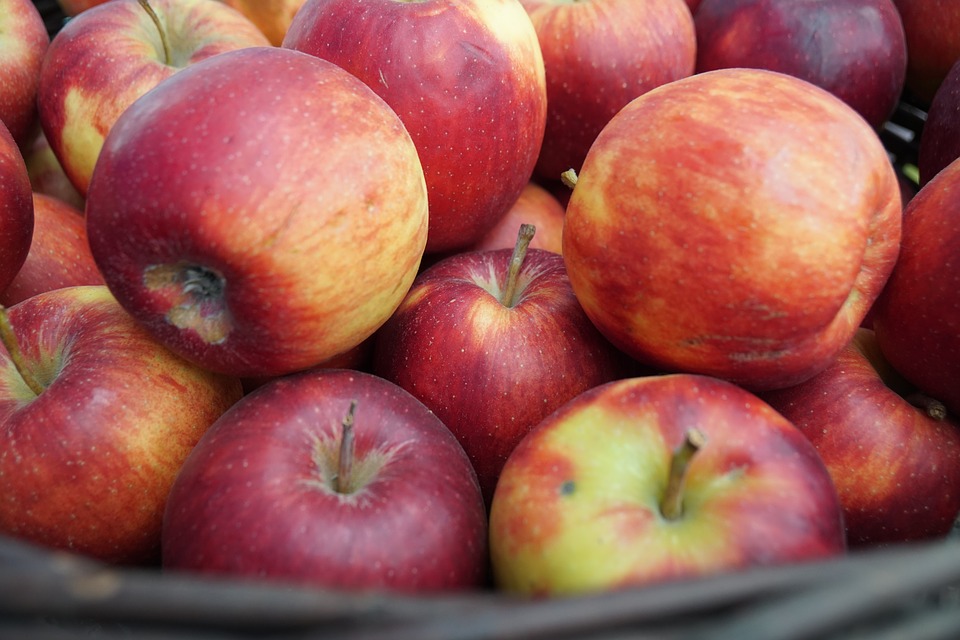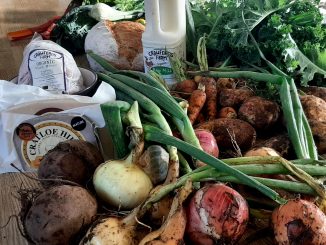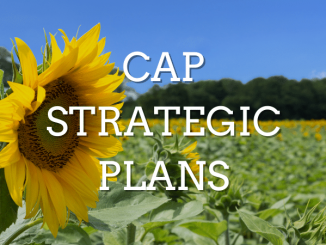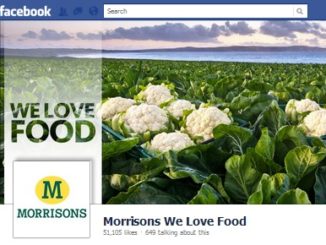In the final of his four part series, Stuart Meikle considers what Ireland could produce for local on-island consumption. Infrastructure, climate, consumer sentiment all play a part. The full series is below.
Simple Idea, Complex Solutions
Ireland’s agricultural sector has specialised towards the export of dairy products and beef, mainly to the UK and the EU. At the same time, domestic consumers are now reliant on food imports.
Recent global events have nonetheless raised the question of whether Ireland should be producing more foods for the domestic Irish population rather than accepting that global trade will provide. It is also not about quantity per se, but also about producing food diversity, and that is currently limited.
While there are calls for Ireland to become much more self-sufficient in staple products, it should be remembered that the import reliance partly arose from consumers’ demands and the consumers switch to using supermarkets who, in turn, have sought lower cost and/or more accessible products from overseas. Consumer demand for year-around availability will also have had a significant impact.
It is, therefore, not a simple case of grow more in Ireland. That has to be accompanied by a change in consumer demand and buying practices. The routes to market will also have to be re-orientated to the supply of local products for local people. After years of centralising processing, it will need investment.
If Irish consumers will NOT make the major changes required to return to a locally grown diet, it may be the case that the Republic’s food security should be viewed in terms of keeping the trade local.
France offers better quality-grain growing climates. Likewise with fruit and vegetables. Holland is a powerhouse for vegetable and flower growing, but that is as much about the scale of investment and application of technology as any climatic advantage – the Mediterranean has the climatic advantage.
Simply, in many cases, Irish producers cannot compete as they lack [or will lack] economies of scale and an existing investment base created over time in buildings, equipment, growing perennial plants and skills assets. Much will have to be created from scratch or small beginnings. It will require support from the Government, and it will require very significant commitment from the local Irish consumer.
Wheat for the Daily Bread
Wheat, as a staple of life, is an interesting case. Ireland uses the predominant proportion of its 300,000 hectares of land under tillage crops to grow barley for feed. It is often stated that more of this should grow wheat to substitute for imports of bread-quality wheats and flour. Nonetheless in 2018, Ireland used about 500,000 tonnes of wheat for human consumption and a near identical quantity of wheat was grown in Ireland. But, of that, over 90% was used for animal feed rather than direct human use.
It is not that Ireland cannot grow wheat; its farmers achieve some of the highest yields in the world, it is a question of growing the varieties in a relatively difficult climate that can meet the bread-type preferences of the Irish consumer. Simply, at present, the consumer prefers products that require specific wheat types. Greater Irish food security will have to be accompanied with a change in tastes.
Further, the Irish tillage farmer has a post-harvest infrastructure that is centralised for the collection of feed grains. There is also separation of collection for malting barley. If Ireland is to establish a local milling capacity to supply wheat [and probably more ‘ancient’ grains] to Irish bakeries there needs to be investment in the entire post-harvest supply chain. An increase in local milling will need farmers who are able to dry, clean and store grain separately for specific market destinations. It may appear desirable to grow more wheat for the domestic market, but a lot needs to be done for it to happen.
From Whence the Potato?
Given the heritage importance of the potato in Ireland, it surprises many that Ireland imports close to half of the potatoes its people consume. In total over 180,000 tonnes were imported in 2018. This is nearly 40kg per person living in Ireland. Of that, one third is imported as fresh potatoes from the UK. Only about 2.5% [or 1kg per person] are imported as ‘new’ from the likes of Spain, Israel and Cyprus.
Of total imports, over half were frozen [99,000 tonnes in 2018 from the UK (43%), Belgium (39%) and the Netherlands (14%)]. Freezing produce requires a significant investment and that is an issue in itself. Freezing also removes the perishability and that means that food retailers and the food service sector are able to use cold-chains to source the product from lower-cost and/or larger-scale producers.
Crucially, with respect to the concept of increasing self-sufficiency, Ireland relies on others for growing its seed potatoes. Seed potato production is a specialist business and is often carried out remote from ware potato production, but you cannot be self-sufficient without a domestic seed growing capacity.
The Supply of Vegetables
Vegetable consumption in Ireland was just under 100 kg per person in 2018 [FAO]. Two-thirds was imported. Of the crops that could be grown in Ireland, onions are probably the most import dependent with over 90% being imported. Of the 42,000 tonnes imported, 51% was from the Netherlands, 23% from the UK and 19% from Spain. Those from the first two named at least could be grown in Ireland.
As with potatoes, a factor that should not be over-looked is what processing capability is available in Ireland. Nearly 10% of the vegetables consumed are frozen and that requires significant investment. It is also the case that with some vegetables, and especially, peas, freezing is almost a necessity. From fork to frozen in two hours is a capital-intensive business and it is unlikely that the Irish market alone can justify such an investment. And perishability does not create a barrier to entry for the investment.
An issue with increasing local vegetable production is the Irish climate. That it is fickle is one reason why vegetables are imported. Crop protection is often needed and that means investment. It can also mean energy for heating. Thus, there is an environmental cost balance to consider between travelled miles and infrastructure provision, although plastic in Ireland may be preferable to plastic in Almeria.
Changing consumer preferences could provide a way to increase vegetable food security. The retailers supply chains have increasingly divorced the consumer from seasonality and that could, in theory, be reversed. If, say, winter greens became more fashionable, more could be grown domestically [ignoring the investment costs needed to supply the major retailers]. But will the consumer actually buy local?
As with wheat, it is not agriculture that has to change, but consumer demand. It will not happen easily given the consumers’ desire for lowly priced vegetables and the retailers willingness to sell them such.
Can More Fruit be Grown?
The other product category that could be better filled with Irish produce is fruit. Again, there is a need for consumers to be willing to change their demands. They will need to eat less exotic origin and/or out of season fruit. They will also need to accept that lower cost fruit from large scale producers across the EU is not preferable to fruit grown on a smaller scale in Ireland’s fickle climate. They may also need to forsake branded fruit and their expectations for Grade One, blemish-free fruit with a long-shelf-life.
The long-term investment profile of tree fruit [and nuts] and cane fruits also creates a barrier to entry. They are capital intensive investments that may not yield significantly for several years. Planting is an act of faith, and more so if the variety is novel or the market new. And that investment may not be limited to planting, it may include controlled atmosphere storage to release fruit to the market over a longer period, packing and, sometimes, processing facilities. For berries, an individual quick-frozen line is a major purchase for a small-scale producer. Sector growth will need grants to pump prime it.
Beyond the market and investment side, there is the need for a new skill set and available labour for harvest. The situation with both will not make import substitution easy. The one approach that may work is where expansion can occur with the few producers in existence or where growers can start small and supply local, thus minimising capital investment while being close enough to the consumer to receive their rewards directly without supply-chain ‘partners’ taking the majority of the retail price.
To add some detail around apples, the FAO gave Irish production as 20,000 tonnes in 2018, or 10% of the apples eaten or used in Ireland. Of circa 210,000 tonnes, about 60% are eaten and 40% are processed, presumably often for cider. There is certainly a market opportunity but, as said, there are many hurdles to take between wanting to be more self-sufficient and actually growing the fruit.
(For more on Fruit, see page 48 of Rural Ireland on the Move – where Tipperary apple grower Con Trass assesses the options for growing various fruits in Ireland)
Producing ‘Plant-Based’ Options
With 300,000 hectares under tillage, Ireland is not short of land relative to its population. That it elects to produce animal feed rather than human food is discussed above. If ‘plant-based’ consumer demand occurs that may change. Land wise, there is scope to produce oats, ancient and less refined grains, and organic grains for local sale. On farm and post-harvest investment costs will all be an issue. Where plant-based alternatives require significant processing investment, it is unlikely that they will be made where the underlying raw material base is small and/or marginal. Both factors are relevant to Ireland.
Grains like quinoa and lentils are now being grown in the UK and soyabean growing has been worked on for decades. It is possible that whereas such crops were once not financially viable, market demand and prices paid may now be changing the economics. Such will have been the case for lower yielding ‘ancient grains’ like spelt. Niche demand has made them attractive to grow but will a transition from niche to mainstream maintain that viability? For Irish farmers, there is the extra complexity created by a climate that is not ideal for the growing of some grains and pulses targeted at direct human use.
Simple idea complex solutions
As with so much of the debate around what are sustainable food systems, there is a chasm to bridge between the simple proposal and the real-life complex solution. Too frequently overlooked in this case is the role that consumer demand plays in where food is produced and trade flows. The second not insignificant issue is the investment costs. The latter can be defrayed by judicious government support for the sector, but the former may be the more immovable object. Much can change over time, but if such is considered desirable, it is wise to fully understand what is needed for the change to happen.
More
Part 3 | Ireland, Food Security & Feed(ing the World) – Is Ireland Feeding Food?
Part 2 | Ireland, Food Security & Feed(ing the World) – Ireland and the Archipelago
Ireland | Intensive Farms Must Pull their Weight for a Just Transition
Letter From The Farm | Watching, Waiting and Knowing When To Help
Feeding Ourselves 2022 – Crises Compound, Food Sovereignty Movement Mobilises
Rural Ireland on the Move – new report on Just Transition and Diversification launched.
Ireland’s Our Rural Future – a rural digitisation gold standard?





